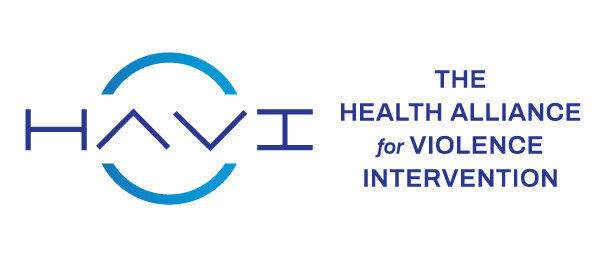Our Impact
HVIPs have a positive effect on a variety of outcomes for violently injured patients, including reinjury, mental health, violent behaviors, and criminal-justice involvement. They are also more cost-effective than traditional treatment.
Effects on Reinjury
The majority of early research on the effectiveness of HVIPs focused on the link between program participation and future risk of reinjury. Randomized controlled trials have shown promising results.
A Chicago HVIP showed that 8 percent of young adults who received HVIP services reported being a victim of violence in the six months after treatment compared to 20 percent of a control group who did not.
A Baltimore HVIP showed 5 percent rehospitalization among young adults who received program services compared with 36 percent among a control group who did not.
A trial in two large urban hospitals showed encouraging results (but did not reach statistical significance), showing that intervention group engaged in 24 percent fewer fights that resulted in 42 percent fewer injuries than the control group.
The Wraparound Project in San Francisco found that over a ten-year period, the 466 clients enrolled in the program experienced a reinjury rate of 4 percent, representing a 50 percent reduction from the historical rate of 8 percent.
The Prescription for Hope HVIP in Indianapolis found that over eight years its 328 participants experienced a 4.4 percent violent reinjury rate compared to a median national reinjury rate of 27.3 percent.
Effects on Mental Health and Substance Use
Evidence suggests that HVIPs play a vital role in screening for risk and assisting violently injured participants with their psychological recovery.
The Wraparound Project in San Francisco showed that over a ten-year period mental health treatment was participants’ most common need; 51 percent of program participants identified mental health needs and the program reported meeting those needs in 85 percent of cases.
An HVIP at Virginia Commonwealth University found that at six months, patients who received intervention had decreased rates of alcohol, marijuana, and other drug use.
By screening participants, the Healing Hurt People program in Philadelphia identified high levels of PTSD (75%) and adverse childhood experiences scores (50% reported a score of four or more), which increases the likelihood of chronic illness in adulthood.
Effects on Violent Behaviors and Justice-System Involvement
Evidence suggests that prior justice-system involvement is a significant risk factor for future violent reinjury. HVIPs aim to decrease retaliatory violence among participants who are survivors of violence who have been justice-system involved. Several studies have evaluated HVIPs’ impact on participants’ violent behaviors and justice-system involvement.
A trial in two urban HVIPs found that 10 to 15-year-old participants treated for interpersonal assault in emergency departments were significantly less likely to engage in misdemeanor offences over a six month period.
A study of older, predominantly African American men with a history of violent injury found that those randomized to HVIPs were half as likely to be convicted of any crime, four times less likely to be convicted of a violent crime, and six times less likely to be hospitalized for violent injury than those in a control group. These differences amounted to approximately $1.25 million in savings from prevented incarceration costs.
An HVIP in Oakland found that its program significantly reduced participants’ risk of involvement with the criminal-justice system.
Other Improvements for Patients
HVIPs also improve patients’ lives in other ways when compared with traditional treatment approaches.
Over a decade, an HVIP in San Francisco demonstrated that HVIPs offer a wide variety of patient-centered services, including victim of crime compensation assistance, employment, housing, education, court advocacy, drivers license and visa assistance, family counseling, and tattoo removal.
An HVIP in Baltimore demonstrated program participants were four times as likely (82 percent) to be employed at program completion compared to controls (20 percent).
Among 20 participants at a Boston Medical Center HVIP, the most commonly cited benefit was the availability of mentorship and advocacy—and counseling and support in particular, which many felt filled a gap left by other health care providers.
An HVIP in Richmond, Virginia, found that those in the intervention group used community services at higher rates than those in a control group when measured at a six-week and six-month follow-up.
Program Cost-Effectiveness
Because HVIPs improve the well-being of violently injured people across a range of outcomes, they promote cost savings for the health care and criminal-justice systems.
An HVIP in San Francisco found that HVIPs are cost-effective at a scale of approximately 100 young adult patients served annually. At that scale, programs generate 24 quality-adjusted life years (QALY), a measure of both quality and quantity life improvements, and produces hospital savings of $4,100.
An HVIP in Oakland sought to quantify the financial investment required to create a single QALY and found that programs can achieve one QALY per $2,941, a figure much lower than accepted values for effective public health interventions for other diseases (like hypertension or hyperlipidemia, which are estimated to cost between $33,500 and $50,000 per QALY).
Research demonstrates that HVIPs have the potential to save money for insurers of high-risk patient populations. A 2014 study found that if HVIP service delivery were provided to high-risk patients, it would result in a national savings of $69 million to the Medicaid program after the ACA expanded to provide coverage for low-income childless adults.
A cost-benefit simulation of an HVIP used several models to examine effects across health care, criminal-justice, and lost-productivity costs. Overall, nearly all models showed savings from a health care, public sector, and societal perspective, with the most conservative showing to be roughly revenue neutral from a health care perspective and the most optimistic model predicting savings across all sectors of over $4 million.






